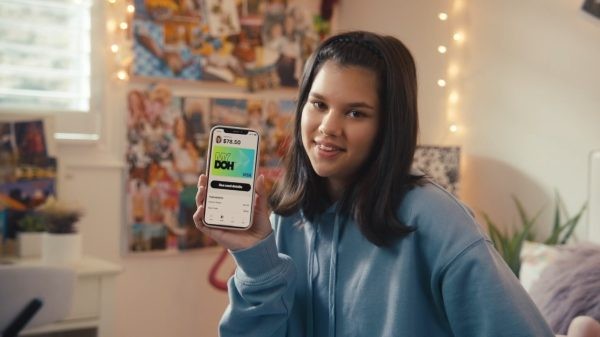In 2000, the average human attention span was 12 seconds. By 2013, it had shrunk to eight seconds, lower than the often-quoted nine-second span of the common goldfish. But new research from Microsoft Canada shows that while long-term concentration is harder to hold in digital environments, there are still ways to grab a consumer’s attention.
Microsoft Canada conducted a gamified survey of 2,000 Canadians at the end of last year, with games designed to assess attention capacities and questions based on things academic research has suggested could have an impact on cognitive function. The company also did a deeper dive with 112 Canadians, putting them through a gamified survey as well as other media tasks while measuring brain activity with EEG scanners.
Perhaps unsurprisingly, sustained attention, or the ability to maintain prolonged focus during a single activity, was lower the more tech, multi-screening and social media an individual used, as well as the younger they were. However, heavy social media users and early tech adopters are more susceptible to “attentive bursts,” or a period of attention that is very intense, albeit short-lived. The gap between the number of bursts digital-savvy users have versus light users begins to close the more time each of them spends with a particular task.
The media environment itself also has an impact on long-term attentiveness. In digital environments, heavy social media users and early tech adopters paid more attention than light users and later adopters, while the inverse was true in TV environments.
However, both heavy social media and tech users performed better in the “encoding” phase, or the period when their brains committed information to memory, regardless of whether there were in digital or TV-only situations, suggesting these short attention spans have trained brains to do more with less information.
Another form of attention is selective attention, or the ability to maintain focus on a task when competing stimuli arises, something that’s increasingly important as the same tools used for work and school are also the ones used for play and entertainment. Regardless of the combination of platforms, people who frequently multi-screen have significantly lower selective attention than those who do it less often.
However, while multi-screening has an obvious negative impact on selective attention, it has a positive impact on alternating attention, or the ability to switch between tasks that require different cognitive skills. Early tech adopters, heavy web browsers and multi-screeners all had higher alternating attention.
Multi-screeners also formed more of an emotional connection and committed more information to memory than those asked to multi-task in TV-only environments. Social media also helps build alternating attention, but only to a point. While “medium” social media users had significantly higher performance than those who used it seldomly or not at all, it plummets for heavy users.
Reaching these multi-taskers is increasingly important for brands. Previous Microsoft research has shown three out of four Canadians multi-screen, a number that rises to nine out of 10 for millennials, and the new survey shows 67% of Canadians say multi-tasking is the best way to get things done.
“This is good news for marketers because it means even though we have shorter attention spans, people are becoming better at processing things and encoding them to memory,” says Alyson Gausby, consumer insights lead at Microsoft Canada. “But it does affect the way we should market to consumers because we do need to get to the point. We need to think about what is most relevant to the consumer and what is going to get them engaged. Then you can talk about a brand’s story.”
Overall, the report says things like entertaining and shareable pieces of branded content and native advertising are most effective in reaching consumers, as they can be presented quickly. Brands should continue experiences across multiple screens, as multiple touchpoints not only fit in to multi-screen behaviour, but satisfy the need for new stimuli required to hold attention over time. They should also exclude unnecessary information by staying very close to the main message, as consumers need less information to keep it stored in memory and to avoid “burnout” from too many stimuli, but it must be done in a way that is creative or personalized to stand out and grab that initial attention. Observations during the research also showed that calls to action were effective ways to draw someone’s attention from one screen to another.
“It’s not to say one screen is necessarily better than another, because even more traditional platforms have an important role,” Gausby says. “It needs to be part of a more immersive experience. During our observations, we saw calls to action on television grab users’ attention, so that platform can be used to motivate the next stage of that longer, multi-touchpoint experience.”
Gausby also points out that the research shows that a consumer’s digital behaviour has more of an impact on attention span and ability to function in interactive or multi-screen environment than their age or gender.
Image courtesy Shutterstock























